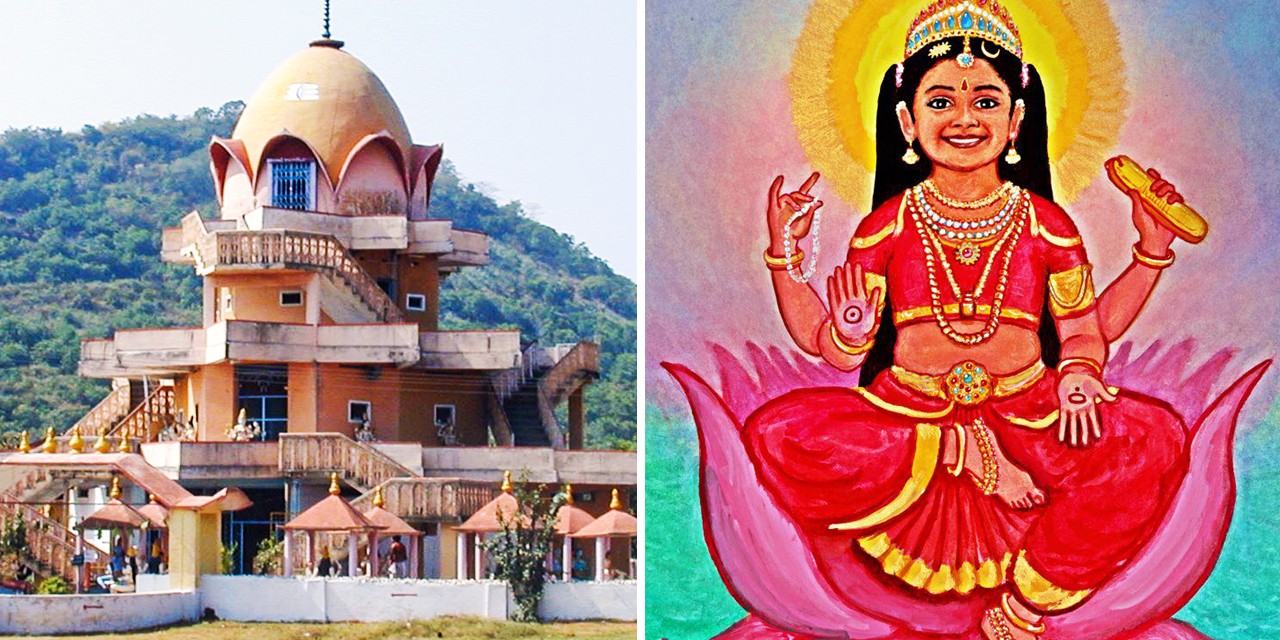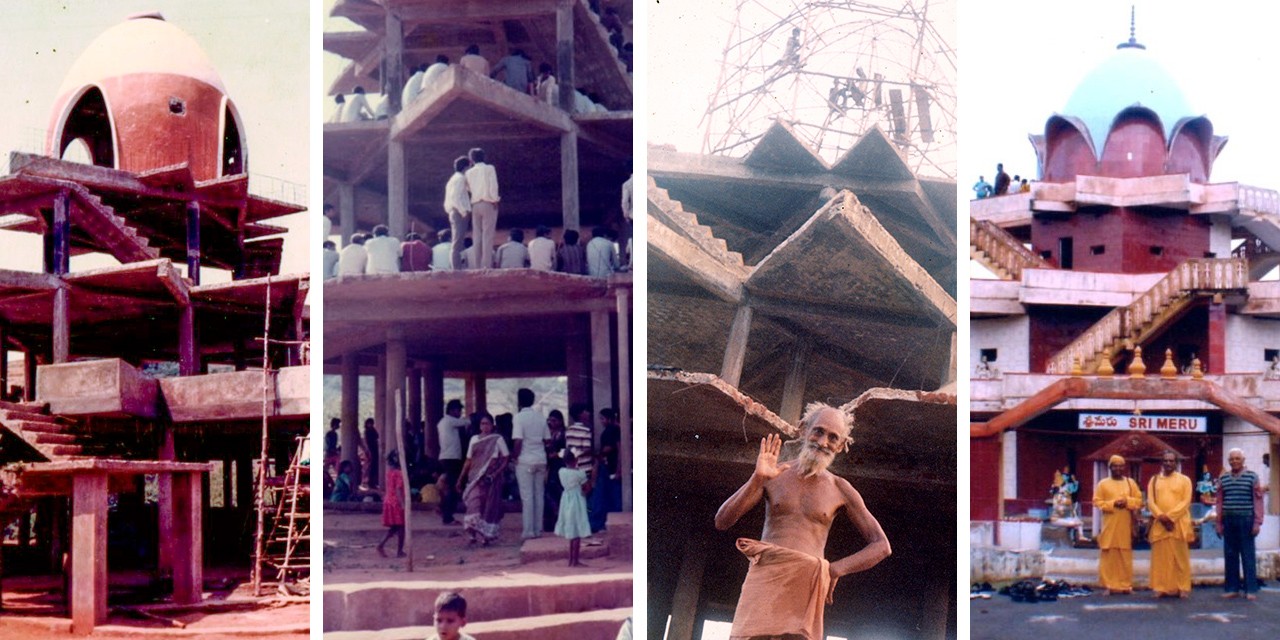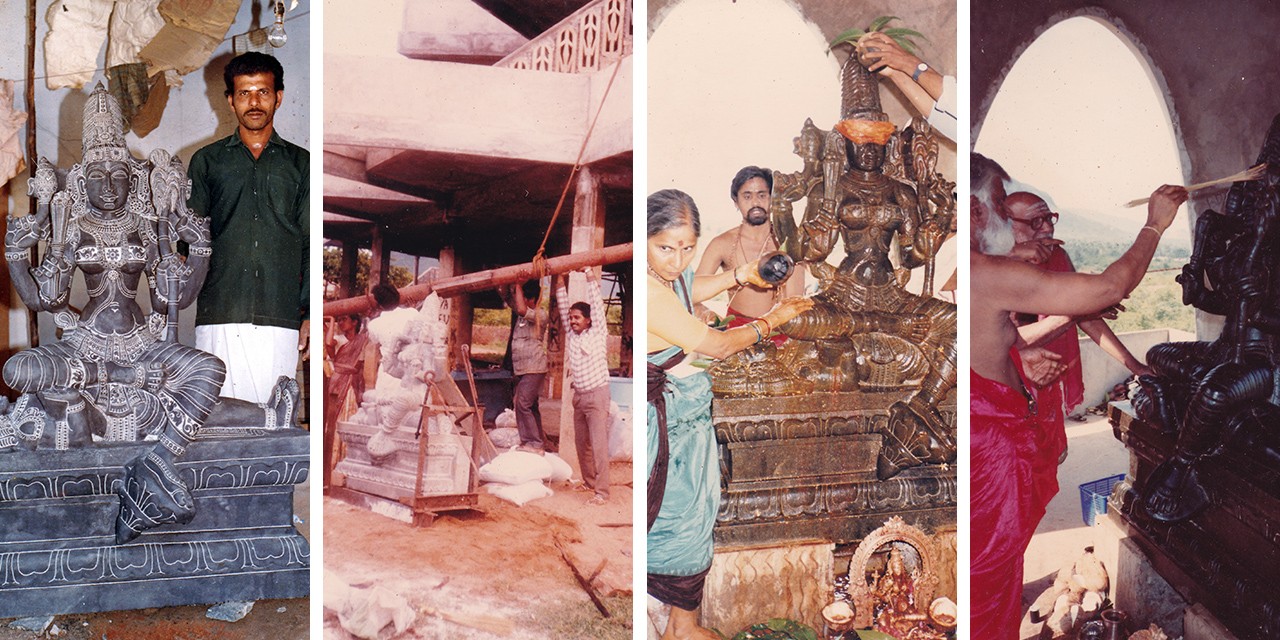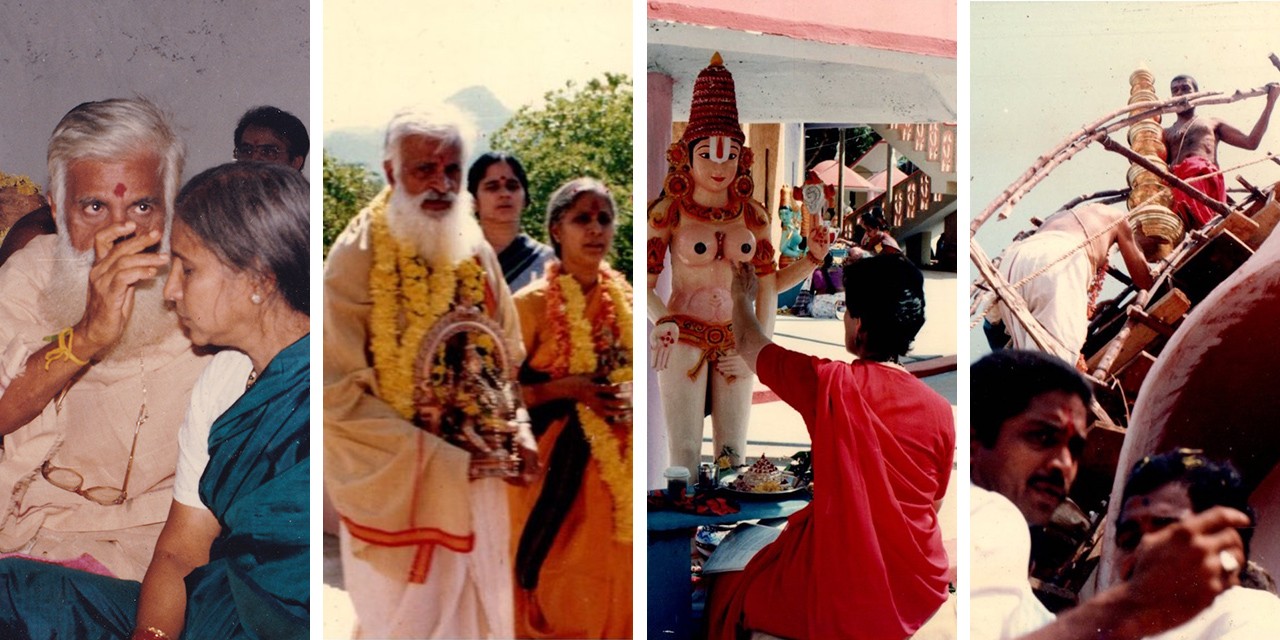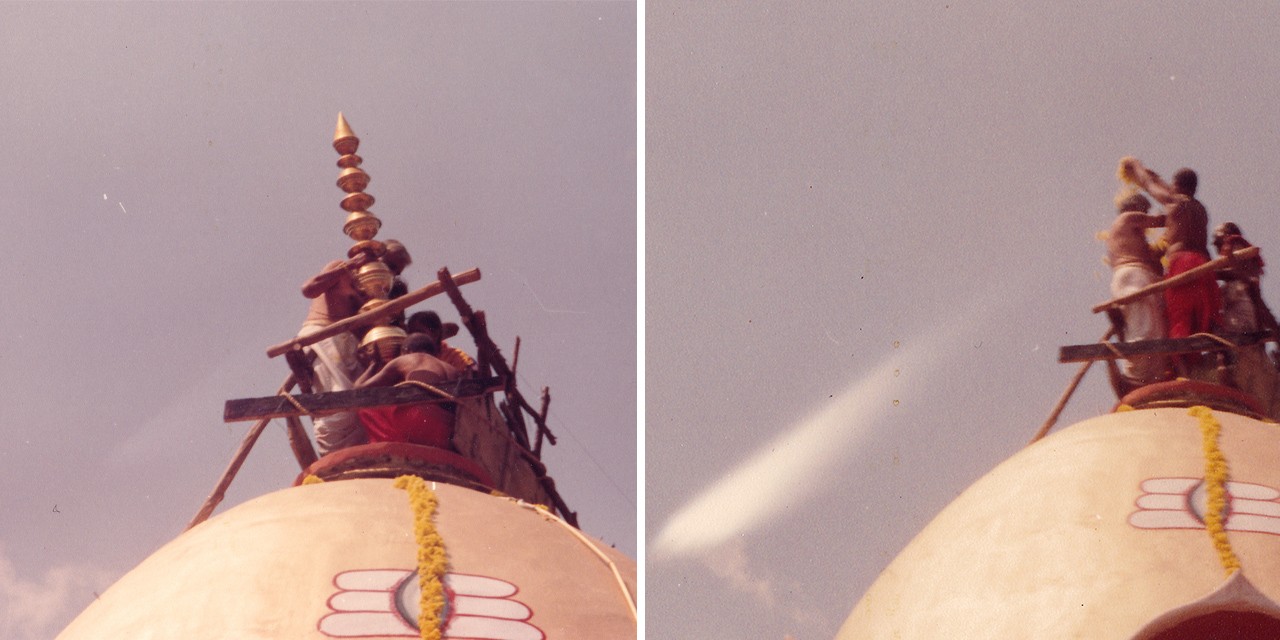Creation of the Khaḍgamāla sculptures
By the end of 1988, after years of painstaking design and off-and-on construction—progress generally fluctuating on some combination of donor largesse and Guruji’s physical availability—the primary frame of the Śrī Meru temple was nearing completion. Yet an equally daunting task still lay ahead: to populate it with sculptures that embodied the myriad deities of Śrī Vidyā ritual practice, more than a hundred of them in all. Once again, the task was almost overwhelming in its scope.
At this point, a third form of the Goddess had begun communicating with Guruji about the temple. Rather than Bālā or Kāmākhyā, it was Hlādinī (a lover of Lord Kṛṣṇa) who spoke to him. Over the entire period of construction, Guruji had a total of three divine mentors: first Bālā, then Kāmākhyā and finally Hlādinī.
In accordance with the Goddess’s instructions, Guruji began systematically meditating on each successive Khaḍgamāla goddess. Hlādinī herself would take the form of each, while Guruji carefully noted “her form, posture, and weapons,” and then described them to a professional sculptor. The innate artistic abilities he displayed in childhood came in handy during this process. “As she revealed each goddess to me, I would translate those visions to the sculptor in words and drawings, and he would then use these descriptions to create concrete castings,” Guruji said.
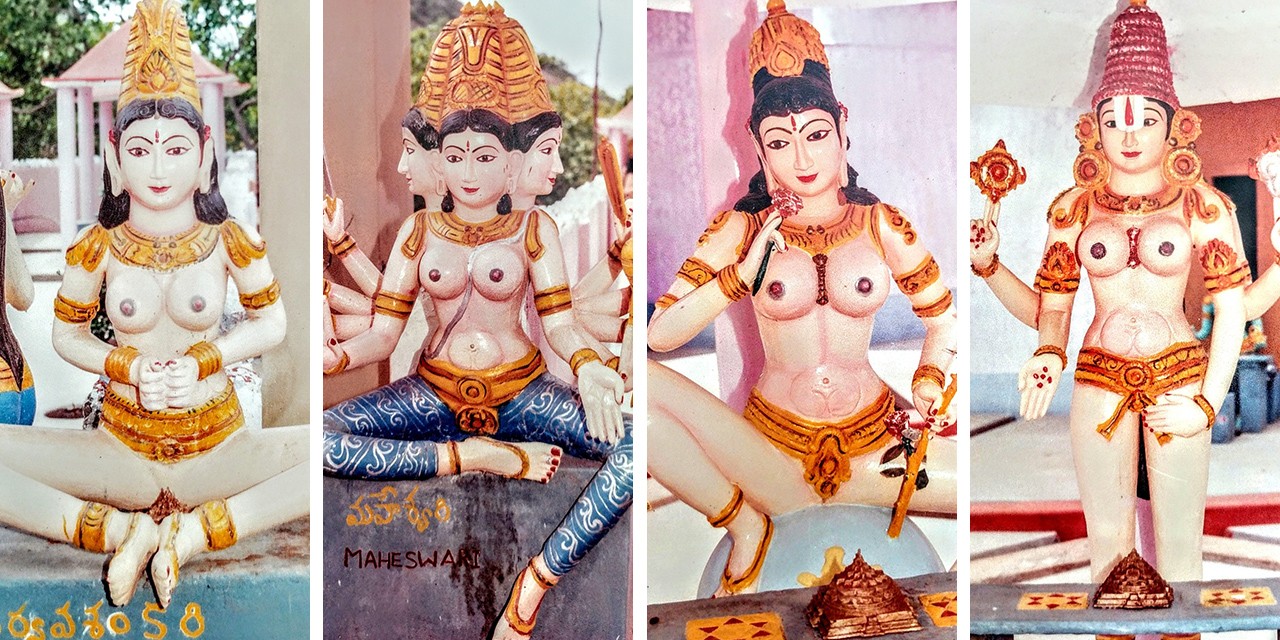
Guruji found this visualization process to be immensely enjoyable, often spending hours in meditation for a single devī. Guruji would note “I saw how her perfect creative potential manifested itself in each of her different aspects, in each varying image of her beauty, all in three dimensions,” he said. “Each one unique, each perfect in her own way.”
Guruji wanted their skin color, eyes, attire—their entire forms—to be as real as they could be, so as to help practitioners feel their presence.
Over the next seven years, from 1988 until 1994, the Meru gradually filled with Khaḍgamāla Devi sculptures. Ninety were Gopalachari’s near-life-size figures, crafted in cement mortar and painted in bright enamels. Seventy of these were arranged at ground level with many housed under their own roofs, creating a series of mini-shrines within the Meru grounds. Another 20 were positioned on the first and second levels above the ground. Then came a number of smaller bronze deities as one approached the top.
Source: "Goddess and the Guru"
